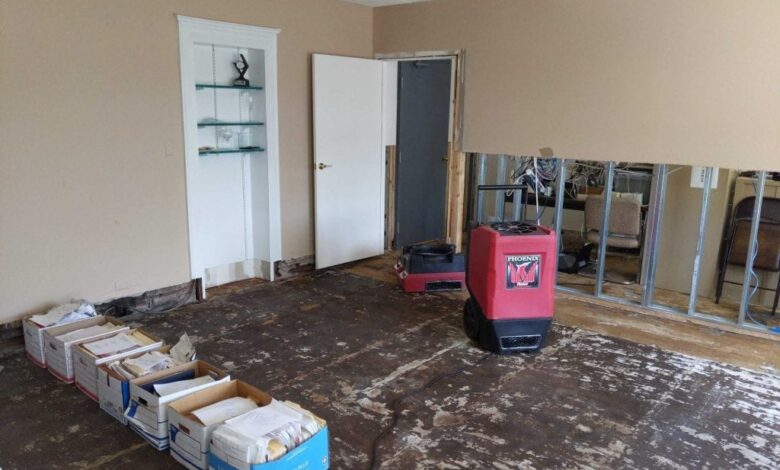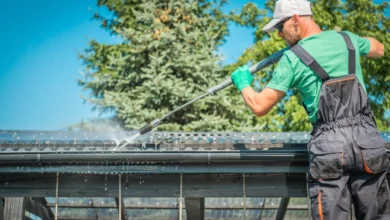The Psychology of a Damaged Home: Navigating Restoration Stress with Confidence

When a home is damaged—by fire, water, or anything in between—it’s easy to focus on what’s visible. Burned walls. Flooded flooring. Collapsed ceilings. But there’s another layer that’s just as real, and often harder to manage: the emotional weight that comes with loss, disruption, and uncertainty.
Home is more than a structure. It’s a space built around daily habits, quiet moments, and a sense of control. When that’s shaken, even temporarily, it affects how people think, sleep, and move through each day.
Below, we explore the hidden psychological toll of home damage and offer solutions for navigating restoration with greater clarity and confidence.
Problem 1: The Shock of Sudden Change
Damage rarely announces itself ahead of time. A fire breaks out unexpectedly. A pipe bursts overnight. You return from vacation to soaked floors or smoke-filled rooms.
This sudden change forces homeowners into decision-making mode while still reeling emotionally. The brain, under stress, prioritizes survival—often at the cost of clear thinking. It’s why so many homeowners feel overwhelmed, indecisive, or panicked in the early stages of cleanup.
The Solution:
Start small and practical. Make a list of immediate needs: Where will you stay tonight? Who do you need to call first? Focus on the next 12 hours, not the next 12 weeks. Short-term clarity reduces mental fatigue.
Establish a point of contact—whether a restoration project manager or a trusted family member—to help organize the to-do list. This early step allows you to shift from panic to plan.
Problem 2: Loss of Control
One of the most disorienting effects of home damage is the feeling of helplessness. Rooms you used to navigate without thought are now off-limits. Furniture is moved, walls are opened, and strangers are in your space.
You may not even recognize your own home. This sense of disconnection can increase anxiety, disrupt sleep, and contribute to short tempers or decision fatigue.
The Solution:
Reclaim a sense of control in small ways. If part of the home is still functional, create a clean, organized space to retreat to. Even one untouched room—your bedroom, a home office—can anchor you during the restoration.
Stay involved in the process. Ask questions, understand the timeline, and participate in choosing materials or approving milestones. Working with a transparent and communicative team makes all the difference. Restoration companies like Secure Restoration often emphasize homeowner involvement not just for logistics, but for emotional recovery.
Problem 3: Decision Overload
Restoration comes with choices—lots of them. What should be salvaged? Replaced? How soon should you file your insurance claim? What does your policy even cover?
Each decision feels high-stakes, and many happen back-to-back. This “decision fatigue” can lead to avoidance, frustration, or rushed approvals that may not reflect your true preferences.
The Solution:
Prioritize and delegate. Focus on structural and safety decisions first. A trusted restoration team can help identify which decisions are time-sensitive and which can wait. Don’t feel pressured to pick new paint colors while you’re still processing what was lost.
Set limits: 30 minutes per day for decision-making, then take a break. This approach reduces burnout and helps ensure better choices over time.
Problem 4: Emotional Attachment to Belongings
Even in minor incidents, there’s often damage to cherished items—family heirlooms, baby photos, favorite books. The loss may be small in monetary value, but it can trigger strong emotions.
There’s also guilt: guilt for not preventing the damage, guilt for prioritizing practical needs over sentimental items, guilt for not feeling “grateful enough” when others say, “It could’ve been worse.”
The Solution:
Recognize that grief in restoration is normal. You’re not overreacting—you’re processing. Acknowledge that emotional connection to your space and belongings is valid, even if the damage seems “fixable” from the outside.
Set aside a specific time to assess sentimental items. Involve others if possible. Talking through what can be restored—and what can’t—helps build closure. If certain items are lost, consider digital backups, framing what’s salvageable, or creating new rituals around rebuilding.
Problem 5: Uncertainty Around the Future
Restoration is rarely linear. Delays happen. Materials go on backorder. Insurance adjusters may take longer than expected. Each new twist adds stress and prolongs the sense of being “stuck in limbo.”
This uncertainty affects mental health—especially for those who thrive on structure. The timeline shifts again, and it feels like normal life keeps moving further away.
The Solution:
Ask your restoration provider for clear weekly updates, even if nothing major has changed. A simple status report—what’s done, what’s next—can reduce the anxiety of the unknown.
Maintain your own personal calendar. Track milestones, deliveries, and tasks. Being able to cross items off—even small ones—can help restore your sense of progress.
And keep perspective: water damage restoration or fire damage restoration may feel all-consuming now, but it is temporary. You will return to routine—even if the journey there has detours.
Rebuilding Isn’t Just Physical—It’s Emotional
No one teaches you how to mentally prepare for a damaged home. And yet, the psychological journey is one of the most important parts of the process. Restoration isn’t just about walls and floors—it’s about helping people feel safe, grounded, and confident in their space again.
Professionals who understand this—like the team at Secure Restoration—approach projects with empathy, patience, and clarity. They know that the real goal is more than visual repair. It’s rebuilding the homeowner’s peace of mind.
Final Thought: You’re Not Alone in This
The moment your home is damaged, you become part of a group no one wants to join—but everyone in it understands. Other homeowners have felt the same frustration, sadness, and anxiety. And more importantly, they’ve come through it.
You’re not expected to have all the answers. You’re not expected to make every decision alone. With the right guidance, a steady pace, and room to process, you’ll find your footing again—not just structurally, but emotionally.
Because restoration isn’t just repair. It’s recovery.




